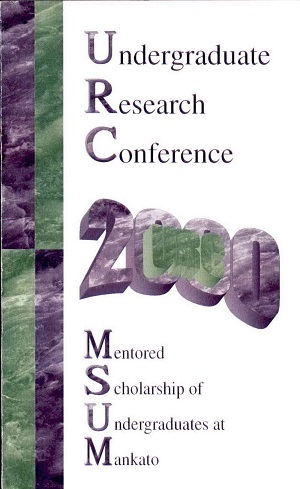A Study of Biofilm Formation in a Low-Nutrient System
Location
CSU
Student's Major
Biological Sciences
Student's College
Science, Engineering and Technology
Mentor's Name
Dorothy Wrigley
Mentor's Department
Biological Sciences
Mentor's College
Science, Engineering and Technology
Description
In a low-nutrient aquatic system such as those found in nature, bacteria are prone to form biofilms on various surfaces. A biofilm is an aggregation of bacteria in microcolonies held together by an extracellular matrix composed of polysaccharides and glycoproteins. Beneficial biofilms cycle essential chemicals in the soil and water, provide protection within host animals and plants, and open barren terrain for colonization by other organisms. However, they are damaging in some systems and are associated with infections of implanted medical devices, obstruction of plumbing, and are reservoirs for contamination and disease. In this study, a Klebsiella was isolated from the Minnesota River and used as the test organism. Klebsiella is known for its ability to form biofilms in nature. A simple biofilm reactor was designed and sampling methods were developed to assess the activity and growth of these bacteria in biofilms. The biofilm reactor and standard methods formulated can be used to further study in biofilm impact in food processing and natural settings.
A Study of Biofilm Formation in a Low-Nutrient System
CSU
In a low-nutrient aquatic system such as those found in nature, bacteria are prone to form biofilms on various surfaces. A biofilm is an aggregation of bacteria in microcolonies held together by an extracellular matrix composed of polysaccharides and glycoproteins. Beneficial biofilms cycle essential chemicals in the soil and water, provide protection within host animals and plants, and open barren terrain for colonization by other organisms. However, they are damaging in some systems and are associated with infections of implanted medical devices, obstruction of plumbing, and are reservoirs for contamination and disease. In this study, a Klebsiella was isolated from the Minnesota River and used as the test organism. Klebsiella is known for its ability to form biofilms in nature. A simple biofilm reactor was designed and sampling methods were developed to assess the activity and growth of these bacteria in biofilms. The biofilm reactor and standard methods formulated can be used to further study in biofilm impact in food processing and natural settings.



